How To Compost in a Small Balcony: Zero-Cost & Zero-Smell in 40 Days
Contrary to the notion, aerobic composting is odour-less and does not require much space. Follow these steps daily to get the best out of waste
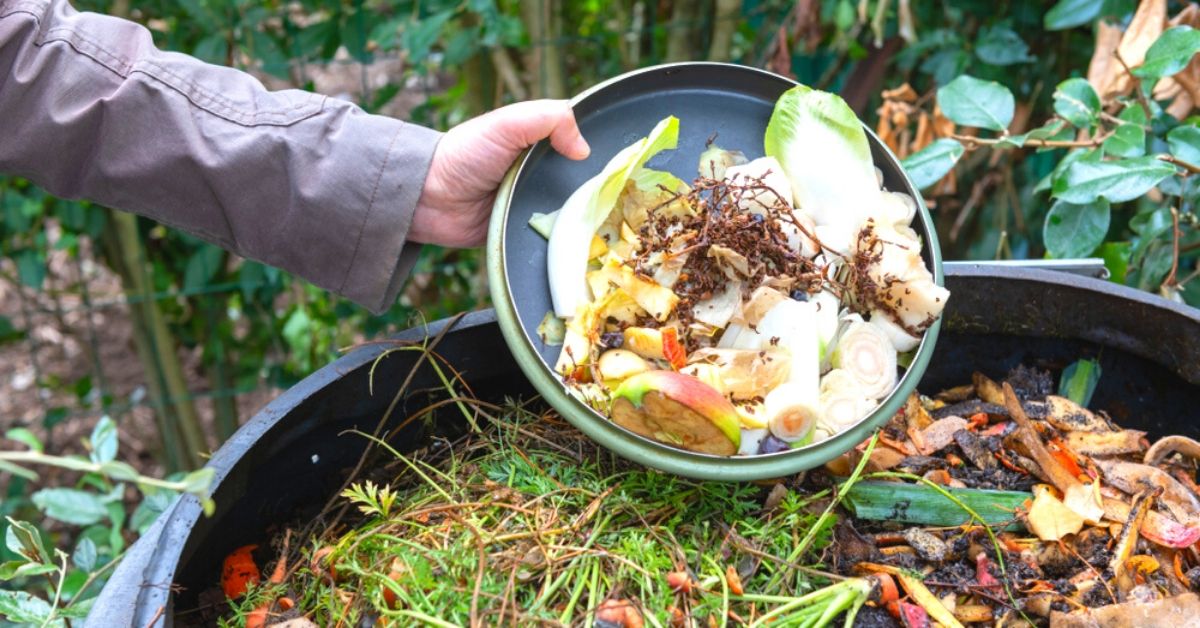
Composting is when food and plant waste material decomposes biologically.

Similar Story

Why a 65-YO Behind Goa’s Eco-Village Quit His Job to Build His Own Slice of Paradise
After learning about the ugly side of development projects as a lawyer, Panta Ferrao quit his job and went on to create ‘Khaama Kethna’ — an eco-village nestled in Goa’s jungles.
Read more >
There are three main types of composting methods, aerobic (with oxygen), anaerobic (without oxygen) and vermicompost (using worms instead of bacteria).
The Better India (TBI) spoke to composting expert Vani Murthy to understand the common aerobic process. This is a process suitable for all kinds of spaces – no matter you have a small balcony, or no balcony at all.
Murthy has been composting for ten years and has been practicing the method of Swacch Graha (a home that generates minimal waste).

Similar Story

Braving Threats, Techie Transforms Barren Riverbanks Into a Lush Forest
G Srikanth from Gudiyatham in Tamil Nadu, witnessed his hometown’s greenery fade away. So, he planted over 15,000 trees across Vellore’s barren lands despite facing threats and opposition from the real estate mafia and politicians.
Read more >
Here’s a zero-cost five-step process you can follow:
Step 1: Add Kitchen Waste in Container

Add kitchen waste like fruit peels, vegetables, eggshells, coffee or tea powder to a container (bucket, drum, terracotta pot). For a continuous cycle, Vani suggests maintaining two containers so that if one is filled, you can continue the process in the other.
Step 2: Add the Browns
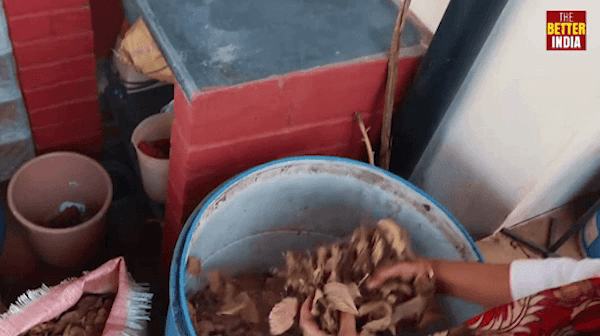
Arrange for the browns like dry shredded leaves, sawdust or cocopeat to control the moisture and add them to the wet garbage.
Step 3: Arrange for Microbes
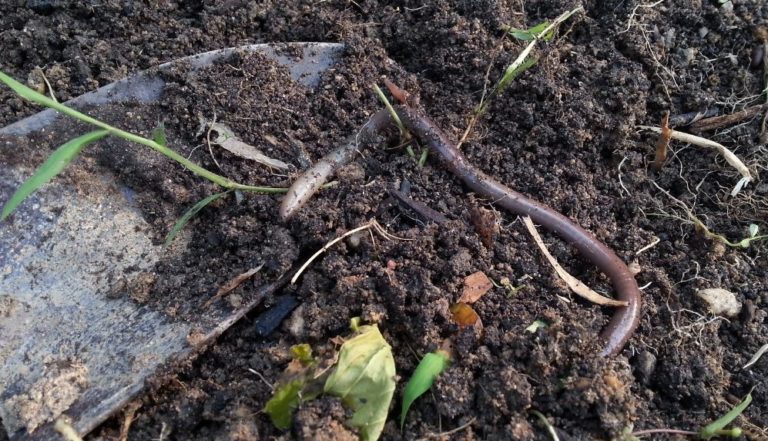
Arrange for microbes to break down the wet waste. Either get microbes from semi-done compost or generate a fresh patch by adding cow dung. You can also add buttermilk to kickstart the microbial colony.
Step 4: Provide Oxygen
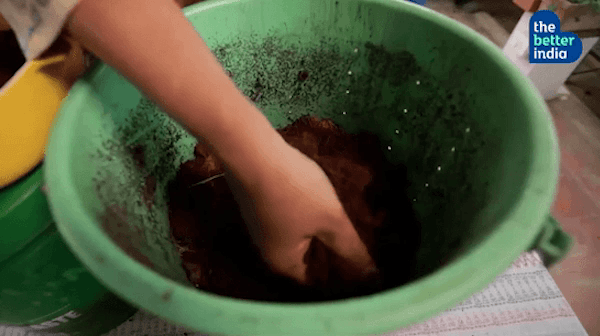
In aerobic composting, providing oxygen is very crucial for a smell-free composting cycle and to avoid crawlies like maggots. Either you can make perforated holes in your container or churn the pile of waste once every four days.
Step 5: Layering
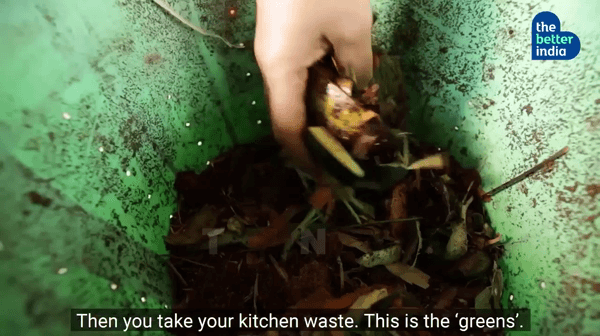
Aerobic composting will prepare manure in 40-45 days. All you have to do is keep adding kitchen waste daily and ensure oxygen flow. If the mix becomes soggy, add more browns to maintain the ratio.
Composting is like the art of cooking and is completely subjective. There is no hard and fast rule regarding the quantity of waste, dry leaves or the size of the container. Keep containers covered and do not let rainwater percolate inside. This process is my personal favourite as all resources are freely available. Do not give up until you get the hang of it as you are preventing 60 per cent of your waste from polluting the environment.”
So, now that you have an idea about what goes into composting, initiate the process and help make the planet greener.
Share this “how-to” with your friends & family
Share on facebook
Facebook
Share on twitter
Twitter
Share on linkedin
LinkedIn
If you found our stories insightful, informative, or even just enjoyable, we invite you to consider making a voluntary payment to support the work we do at The Better India. Your contribution helps us continue producing quality content that educates, inspires, and drives positive change.
Choose one of the payment options below for your contribution-
By paying for the stories you value, you directly contribute to sustaining our efforts focused on making a difference in the world. Together, let’s ensure that impactful stories continue to be told and shared, enriching lives and communities alike.
Thank you for your support. Here are some frequently asked questions you might find helpful to know why you are contributing?


This story made me
-
97
-
121
-
89
-
167












